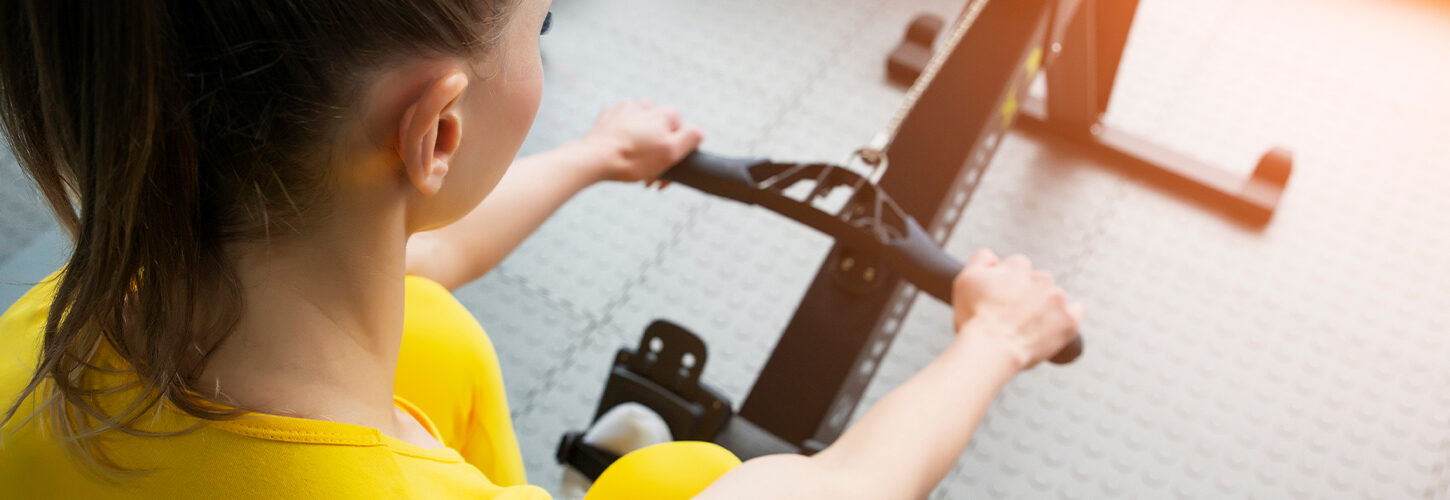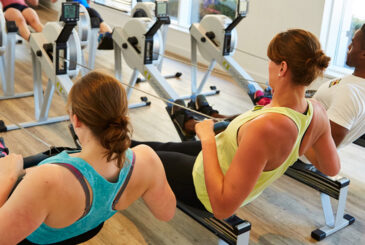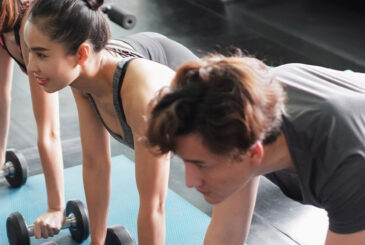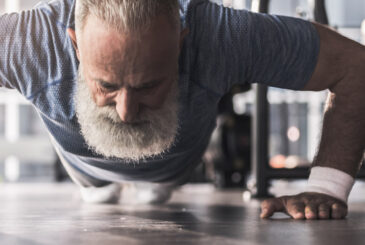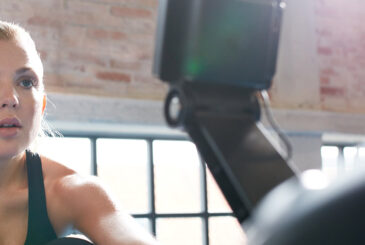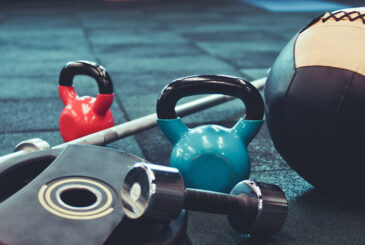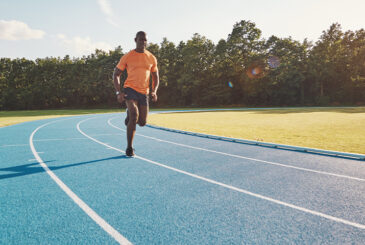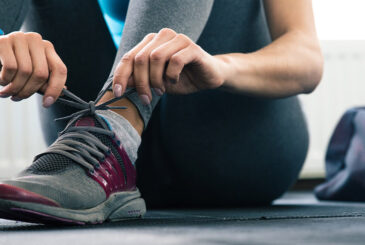If you’re using an indoor rowing machine regularly but don’t seem to be improving, it might be worth checking that you’re not making one of these common mistakes in training.
Indoor rowing is a fantastic exercise. Like on-water rowing it uses nearly all the major muscles groups.
To get the best out of indoor rowing, as with other technical sports, it is worthwhile developing a foundation of good technique. For me, this translates to a good rowing stroke sequence and good body movement pattern plus the right technical set up on the machine. All are equally important to reduce the risk of injury and allow you to become efficient and maximise your fitness and strength (think going fast).
The rowing stroke is made up of relatively simple and repeatable sequences of movement. There is plenty of instructional information available covering the stages of the rowing stroke: the “drive” stage (legs down, body swing then arms pull in) and “recovery” stage (arms out, body swing then legs up), so I won’t cover those fundamentals here.
My overall advice is to master the basic movement sequence and work toward ensuring you can get your body into the optimum position for each of the stages. This may mean working on your mobility and stability or any muscle imbalances. Ultimately this will enable you to harness your power by improving your connection with the machine and also help develop good rhythm and flow to your rowing.
As with most technique-driven sports there is always something to look out for or improve. Common technique and movement pattern errors can creep in, even for the experienced rower. Also, technical set up errors on the machine can be overlooked; often a tweak here and there can really improve performance and comfort.
Here are some common technique and technical set up errors with simple suggestions to help correct them.
Technique errors (timing and sequencing)
When looking to assess technique or recognise errors, video yourself rowing or row in front of mirrors. Seeing yourself row will bring consciousness to your movement and make it far easier to see what you need to work on.
Pulling the arms early on the drive
Pulling with the arms early reduces the effectiveness of the leg drive phase. It is important to drive with straight arms so the power produced by the legs is transferred solidly to the body swing and the finish of the stroke. To correct an early arm pull, think about establishing a pattern of pushing not pulling, by concentrating on keeping your effort below the shoulders. Save pulling the arms to the end of the stroke by hanging off the handle. Try to transfer the urge to arm pull by engaging your lower core instead.
A great way to feel for the hang is to anchor the handle to the front of the machine and practice moving backwards on the seat holding the handle with straight arms – a suspension drill. As you push back, your rear end will lift and hover over the seat giving a real feeling of hanging on the handle with straight arms.
Bending the knees too early on the recovery
Bending the legs during the recovery phase, before the hands and arms are away, means the knees get in the way and become a real hindrance to smooth rowing. You will also struggle to reach the beginning of the stroke (the catch) in an optimal position. At the catch, arms should be straight and forward, knees directly over ankles, shoulders in front of hips, and legs loaded ready to push.
Make sure the handle clears the knees before moving up the slide so you do not have to lift the handle over them. Think fast hands away and keep the chain level during recovery up the slide. To help correct this sequencing error, take the legs out of the equation and practice the arms only and arms and body swing elements of the pick drill.
Over compression at the catch
If the seat bumps into your heels at the front of the stroke (the catch) you are in an over compressed position. It is likely your back will be curved and shins beyond vertical. Being over compressed results in a much weaker leg push in the drive phase.
At the catch, there should be distance between the seat and the back of the heels with the shoulders in front of the hips (one o’clock body position). Think about having a triangle of air under your lower and upper leg. This optimum start position allows strong leg muscle engagement for a powerful push.
A way to eliminate over compression is to put a marker such as tape on the slide at the position where your shins become vertical. As you row the little bump as the seat rollers hit the marker will be a reminder that you’ve gone too far up the slide
Top tip! Rowing on a machine without using the foot straps to secure your feet (strapless rowing) is a superb way to help finesse technique and sequencing
Set up errors
Damper settings/drag factor
With a variety of indoor rowing machines on the market it’s important to understand a bit about how they work and how they differ. One major difference is the type of resistance provided by the machine; air (e.g. Concept2), water (e.g. WaterRower) or magnetic resistance are all available and a lever or dial on the machine will allow you to set it.
What must also be It’s also good to to be aware of how these resistances actually work. For instance, on a Concept2, the damper lever controls the amount of airflow into the flywheel; more air (higher damper) will make it feel like you’re rowing a heavier boat, less air (lower damper) means a lighter boat.
Definitely refer to the user guide and remember the level of resistance you use should feel right for you, for many people the number they choose is personal preference. In my view there is no merit to using a heavy row boat to train and hone your technique.
Foot plate position
To enable a good “push” (think power again!), your shins need to be directly over ankles and shoulders in front of hips at the start of the stroke (the catch). But you’ll find it difficult to get your vertical shins when your foot plate is set too high. A top tip is to experiment with the foot plate position so you can achieve a good start position; video yourself rowing to guide you. In most cases it will mean that the foot straps sit over the widest part of the foot. If your ankle dorsiflexion is poor then work on mobility and flexibility in that area.
While mentioning feet (!) avoid chunky heeled footwear. Chunky footwear can give a false sense of achieving vertical shins and also take away any feeling of true foot connection with the foot plate. Furthermore, an element of your energy used to push can be absorbed by the chunky heel rather than applied to the foot plate.
Use of the screen
Most indoor rowing machines will show similar data on the performance monitor or screen whilst you’re rowing – split, stroke rate, pace, distance, time, etc. For those machines with a memory function, this is a better way to look back at your row, rather than the finish screen itself. To find your workout in the memory of a Concept2 follow these instructions.
If this article has inspired you to want to improve your technique further, check out our indoor rowing technique video with Alex Gregory or sign up for the Go Row Indoor online workshop.
| What do YOU want to read about on British Rowing Plus? |
|---|
| What do you find interesting here on British Rowing Plus that you’d like more of? What haven’t we covered yet that you’d like to read about? Let us know by emailing [email protected] |


